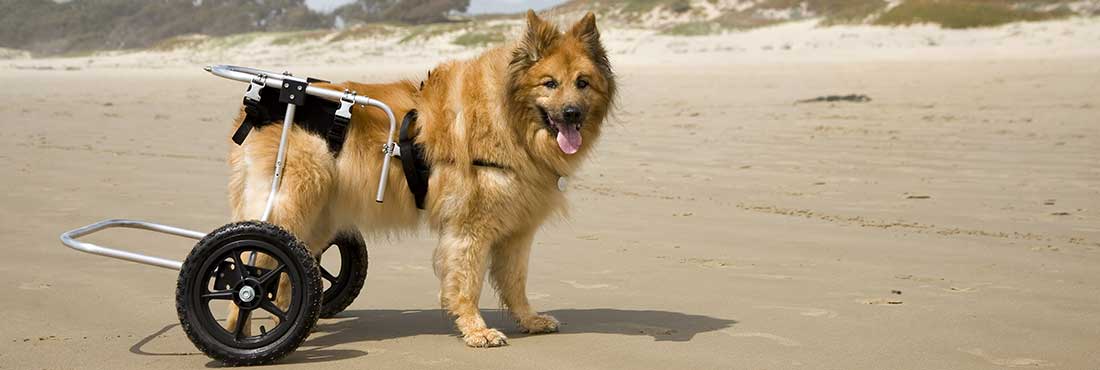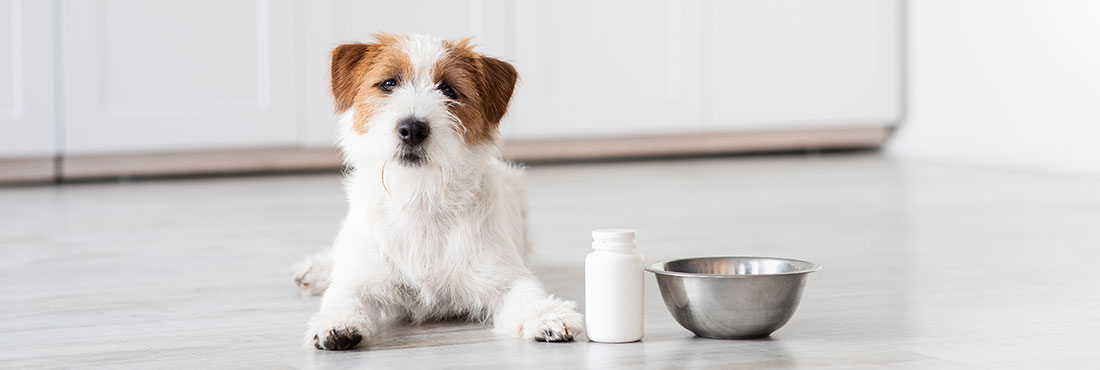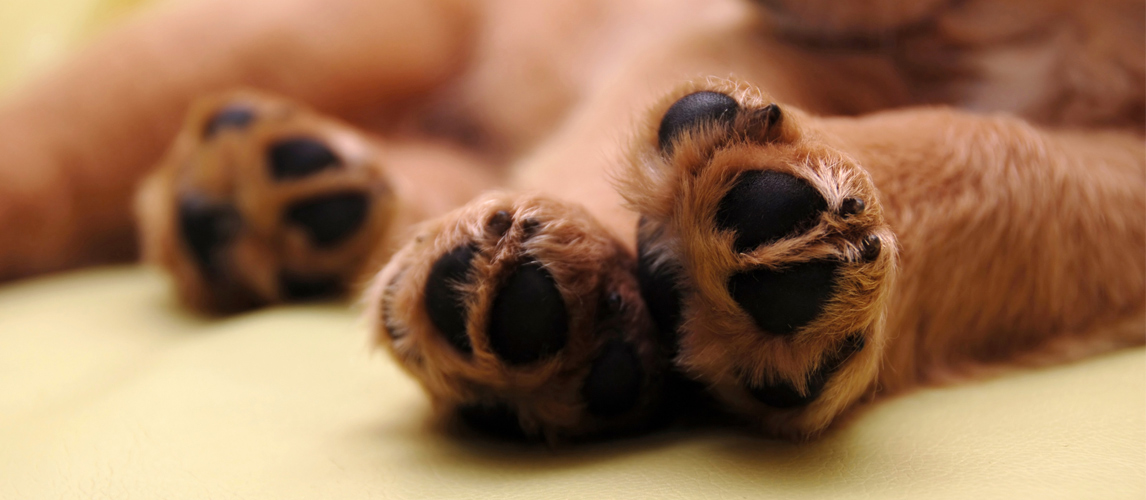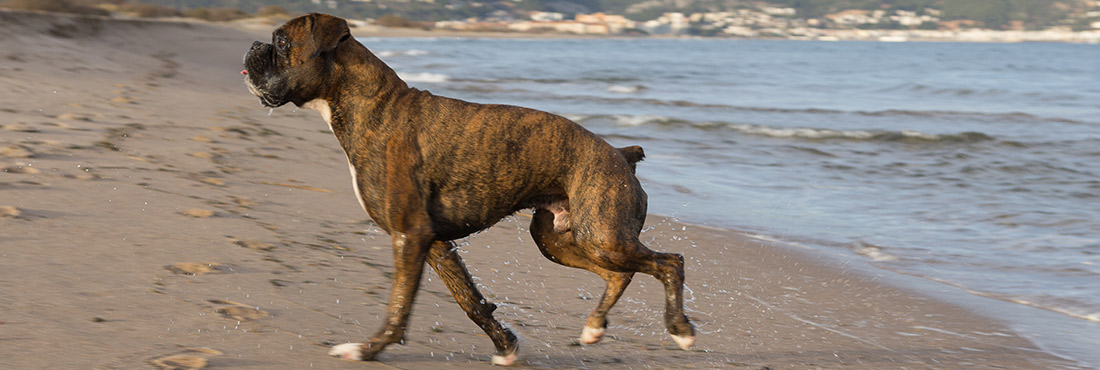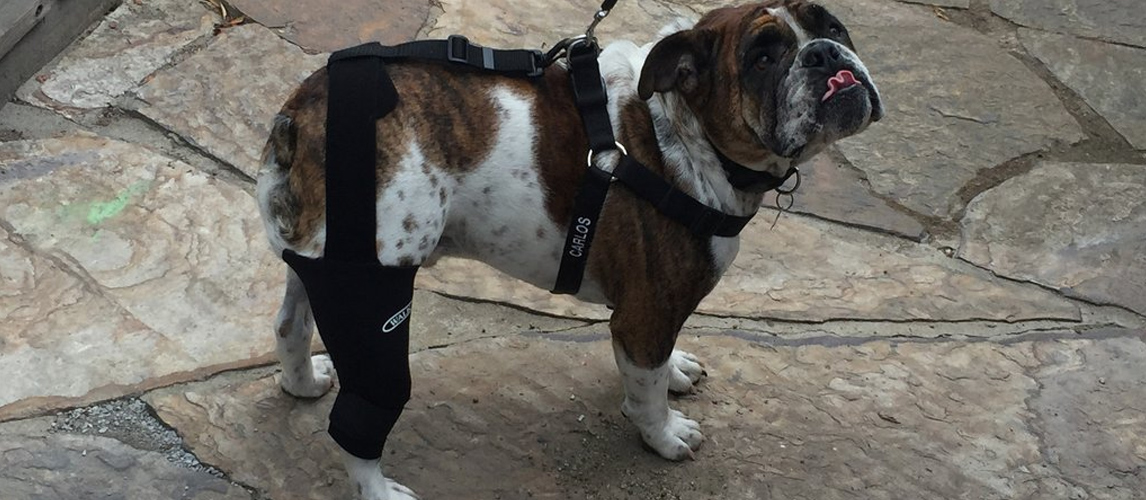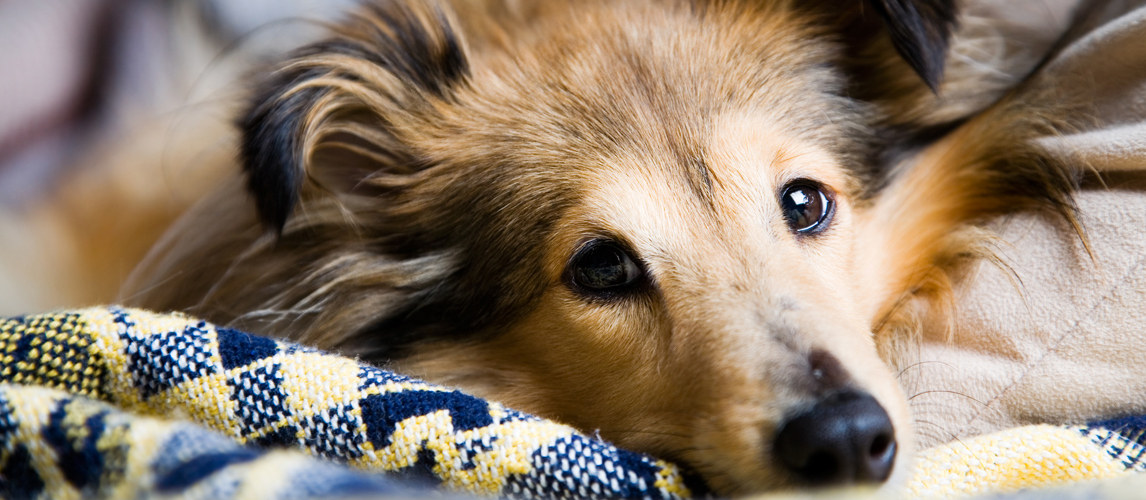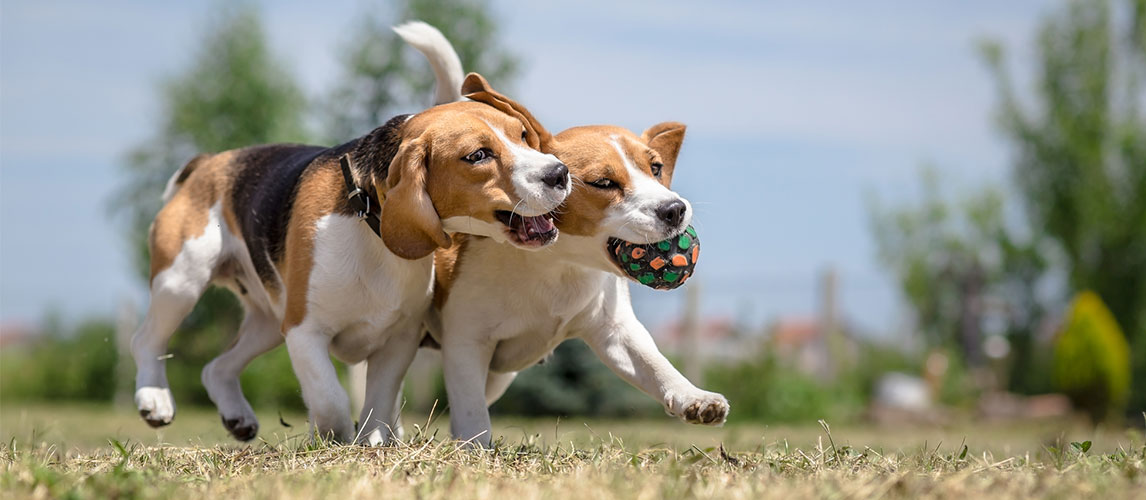Dogs can suffer from various conditions, but some breeds are particularly prone to certain health issues that can develop into further problems later in life. Young dogs of larger breeds are especially prone to elbow dysplasia which can turn into arthritis as they get older.
This condition, of course, affects your dog’s elbows and can cause lameness in their front legs. It is not a painless disorder and must be taken seriously if you spot the symptoms. So what does elbow dysplasia look like in dogs? How do you treat it? Is there a way to prevent the disorder? Below you can find the answers to these questions and more.
What is Elbow Dysplasia in Dogs?
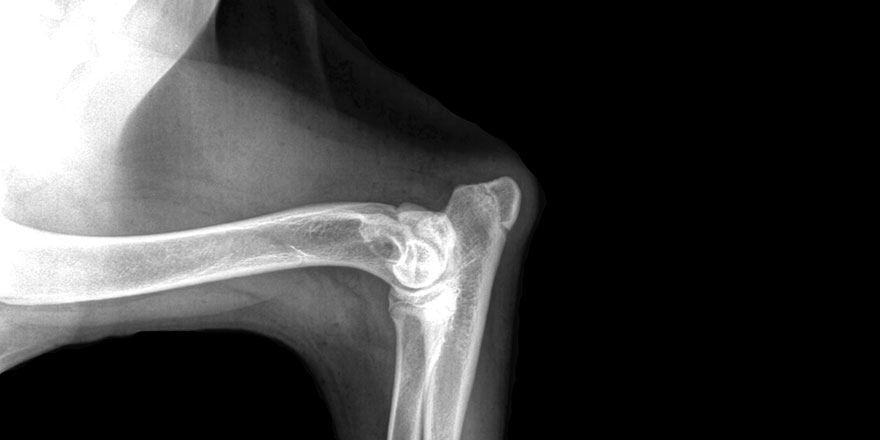
Elbow Dysplasia is a common disorder that affects medium-large breeds of canines and is essentially the abnormal development of the elbow joint. This typically occurs in dogs that grow rapidly when they’re young. Not only does the elbow joint grow abnormally, but the cartilage is also affected, causing further stress on the area.
The elbow comprises three bones, the radius, ulna, and humerus bones, which makes it quite a complex joint. When these three bones do not fit together, this causes abnormal development.
The disease attacks both elbow joints but can occasionally affect just one. When elbow dysplasia is apparent, not only will it cause front limb lameness, but it will also lead to arthritis due to the unbalanced weight distribution.
What Breeds are Prone to Elbow Dysplasia?
Medium-large breed dogs have an increased risk of developing elbow dysplasia/elbow osteoarthritis, which commonly affects the breeds below:
- Golden Retrievers
- Bernese Mountain Dogs
- Basset Hounds
- German Shepherds
- Labrador Retrievers
- Rottweilers
- Newfoundlands
- English Springer Spaniels
In addition to elbow dysplasia, it is also likely that these dogs can develop hip dysplasia. This is a similar condition that affects the dog’s hip joints and is characterized as a malformation in the socket and ball.
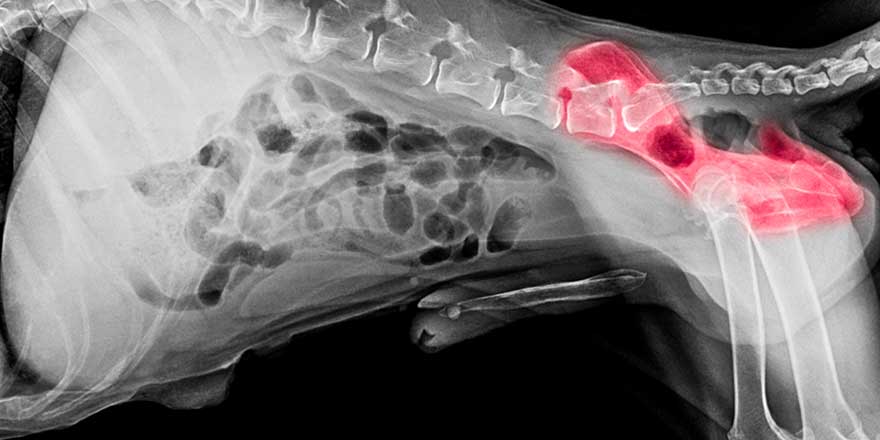
So if you’ve had your eye on any of the breeds above, it’s important to ensure that the breeder you purchase from has screened their dogs. During these checks, they will be sure that their dog’s elbow status is in good condition reducing the likelihood of your new pup developing it.
Clinical Signs of Canine Elbow Dysplasia
The most common and telltale sign of elbow dysplasia in dogs is lameness in one or both front legs. Affected dogs will also limp when walking, and you’ll observe their head bobbing up and down as they walk.
Due to the pain, most dogs will be hesitant to be active and refuse to go on walks or play. Moreover, when the dog does move, you will notice a poor motion range in their front legs and signs of pain and discomfort.
Furthermore, you may hear unusual crunching sounds from the dog’s elbow when it is being moved or extended. To add, the affected elbow may be held at peculiar angles, and they may struggle to lay down and stand back up.
In terms of the elbows themselves, they may appear swollen at times, especially if your dog has been active. If a dog is in their senior years when the condition develops, it’s common for them to experience sudden lameness with fluid build-up in the joint.
When Can Symptoms Occur?
Elbow dysplasia can occur at any time in a dog’s life. Although it’s difficult to imagine, it is possible to see elbow dysplasia in puppies. This is because the condition is more likely to develop under a year old. In some instances, as young as four months, puppies have been known to develop the condition.
A note on puppy elbow dysplasia: Generally, if the abnormality is severe, they will develop it sooner, but it’s not unusual for seniors to suddenly develop the condition.
Common Causes of Canine Elbow Dysplasia
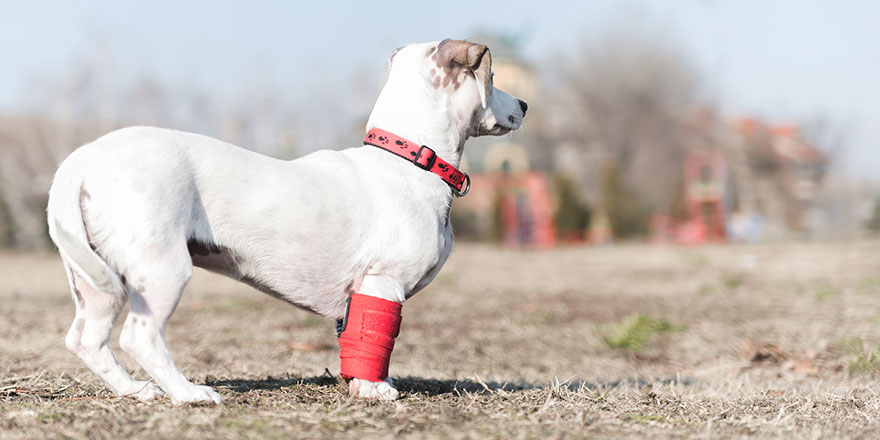
It’s said that elbow dysplasia/medial compartment disease commonly occurs in the breeds listed above, making it hereditary. However, this painful disease occurs when one or more of the below conditions affect the elbow joint:
Elbow Incongruity
This means that the joint has grown abnormally and doesn’t fit well where it should. The structure is improper and, as a result, contributes to the deterioration of the cartilage.
Fragmented Coronoid Process
The fragmented medial coronoid process describes the tip of the ulna bone. Inside this crevice is where the humerus fits and interacts with the coronoid process. The inside of the coronoid process detaches from the ulna resulting in the term ‘fragmented’.
When this happens, your dog is left with a pebble in the shoe-type situation where the bone piece remains stuck and irritates the elbow joint. This will cause pain when walking or running.
Ununited Anconeal Process
The top piece of the ulna bone is known as the anconeal process. This condition occurs when abnormal pressure causes the failure of the bone to fuse with the rest of the ulna bone, making it an individual fragment. It’s said that the German Shepherd is commonly affected by this.
Osteochondrosis Dissecans of the Medial Humeral Condyle
This is where cartilage is formed abnormally, causing it to loosen from the joint surfaces. This, like the previous conditions, is also very painful for dogs to endure as cartilage is an essential coating that ensures that movement is frictionless and pain-free.
Environmental Factors
Although elbow dysplasia is an inherited disease, it is speculated and suggested that environmental factors can also lead to a dog developing the condition. These factors include:
- A poor exercise regime
- Obesity
- A high-calorie diet
Diagnosing Elbow Dysplasia in Dogs
Before any examination, your vet will obtain a thorough medical history of your pooch before they can confidently diagnose elbow dysplasia. In addition, they will ask for details regarding the circumstances of the symptoms you have observed.
Your vet will also complete a physical examination and a thorough orthopedic exam which will involve checking your dog’s joints, mobility, and gait. Furthermore, they will take X-rays of the elbows to identify whether there are bone fragments present and if arthritis develops.
A CT or arthroscopic examination can also be performed as X-rays won’t display cartilage. CT scans, especially, are an effective way to show any bone differences.
Early diagnosis of elbow dysplasia in dogs
The sooner elbow dysplasia is diagnosed, the sooner it can be treated. This is because it can eventually cause osteoarthritis in the affected joint.
Treating Elbow Dysplasia in Dogs

Depending on the circumstances and the severity of the condition, your vet may recommend surgical or non-surgical options. Either alternative, including surgical diagnosis, has the potential to cost a lot of money but should be enough to treat the dog’s elbow joint. Below you can find a breakdown of the treatments available for both options.
Non-Surgical Treatments
Non-surgical care often involves drastic lifestyle changes to help reduce inflammation and prevent the problem from worsening. These options are typically recommended when the severity of the condition is mild or if your dog is not a suitable candidate to undergo surgery.
Controlled Exercise
Restricted exercise, especially on hard surfaces, will be advised regardless of what treatment you opt for as it will help to decrease pain and won’t provoke further issues with the elbow joints. Although exercise, in general, seems off the table, it’s still necessary that your canine companion gets up and about. The important thing is moderation and monitoring. Dogs with elbow dysplasia are likely to put on a few pounds or even fall victim to muscle atrophy if they don’t receive an appropriate amount of exercise.
In addition, your vet may also recommend monitoring your dog’s weight. If your dog is a little heavier than it should be, you may have to switch to low-calorie dog food. By doing this, you will reduce the weight hoisting onto the dog’s legs, which impacts joint function and condition. If you’re unsure what food to feed your dog and their exercise regime should look like, talk to your vet, who will help you form a detailed action plan.
Joint Supplements
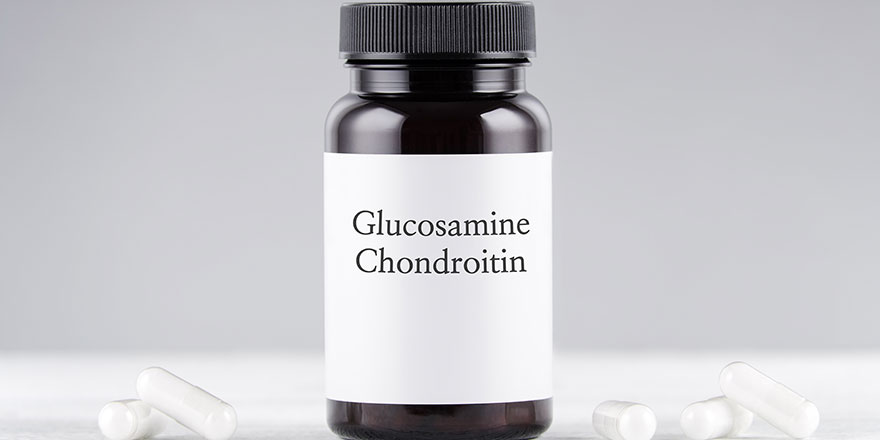
Glucosamine and chondroitin are two of the supplements that your dog will take to help the condition. Glucosamine is a natural compound used to alleviate rigidness and discomfort by quashing inflammation. It also boosts the repair of any damaged cartilage.
Chondroitin is a natural substance that can help reduce pain in the affected joints. Furthermore, it is known to slow the progression of arthritis and encourage mobility and function.
Other Methods:
To treat elbow dysplasia, your vet may suggest other methods, including physical therapy, medications such as nonsteroidal anti-inflammatory drugs and corticosteroids, and joint fluid modifiers. When discussing treatment options with your vet, they can go into specific detail regarding what each option entails so that you can understand the best solution.
Surgical Treatment
If your dog qualifies for surgery, there are a few treatment options that your surgeon may proceed with. The most common is arthroscopic surgery, which involves a minimally invasive tactic of making a tiny hole into the joint. Via this hole, an inspection can be made to identify fragments/debris, which can be carefully and thoroughly removed. Elbow arthroscopy is a preferred method; most dogs go on to lead a relatively more comfortable life once they have recovered. In some cases, an ulnar osteotomy can be completed to remove a segment of the ulna bone, drastically improving forelimb lameness.
Recovery of Elbow Dysplasia in Dogs
With elbow dysplasia treated, you must always allow time for your dog to recover effectively. In some instances, your vet may refer your dog to a rehabilitation center/practitioner who can engage your pooch in physical therapy activities. Otherwise, you will be advised to keep your dog rested with minimal exercise over 4-6 weeks until it is ready and comfortable to stand and move more. It is also imperative that you make follow-up trips to your vet to monitor the progression of the incision and the use of any pain relief medication. Not to mention a check-up on your pup’s well-being, as not all dogs respond to treatment well physically or mentally.
Preventing Elbow Dysplasia
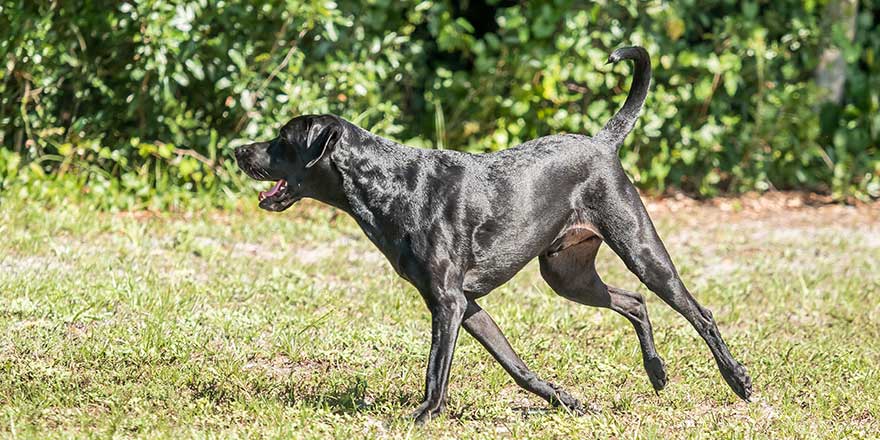
The best and most efficient way to prevent elbow dysplasia is by screening breeding dogs before they can pass on the hereditary condition. This goes especially for those hoping to gain numerous litters using giant breed dogs. It is recommended that at-risk breeding dogs and any closely related to the breeds are radiographed to examine the condition of the dog’s joints.
Protect Your Dog With Insurance
You may be surprised to learn that many dog owners go without insurance which can cause further damage in the long run. We all know that your fur baby will make a big dent in your pocket, but why make things more difficult if your dog gets into trouble?
Insurance is imperative because you never know when you will need that extra cash to save your pooch from a long time of pain or discomfort. By having insurance, you can guarantee you will have the funds to provide them with the best care. So if you’re looking for a new puppy friend, give them the best start in life and look for cover.

